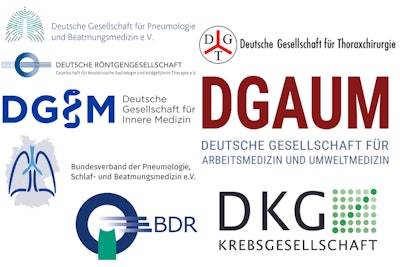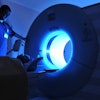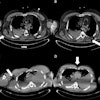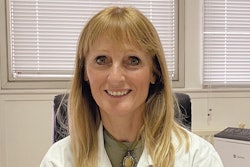National screening for lung cancer finally became a reality in Germany on 1 July, providing further momentum to the seemingly unstoppable drive toward the widespread use of low-dose CT (LDCT) in high-risk groups.
"Another European country moving towards implementation is a very good sign," former president of the European Society of Thoracic Imaging (ESTI) Prof. Marie-Pierre Revel told AuntMinnieEurope.com, adding that until now, the German authorities did not allow the use of radiation in asymptomatic individuals.
"The program in itself is not very different from what other countries have applied," she said. "There are small differences regarding the eligibility criteria, and no reimbursement yet." The German program has more requirements on the use of double reading, whereas in the U.K., for instance, screening is done by single reading by thoracic radiologists plus AI, Revel explained.
The Lung Cancer Early Detection Ordinance (LuKrFrühErkV) of the Federal Ministry for the Environment, Nature Conservation, Nuclear Safety and Consumer Protection (BMUV), which has now come into force, is the basis for this first important step, according to a joint statement issued on 28 June. "Further steps must follow before an early detection program is available to all people at risk," it noted. The Federal Joint Committee (Gemeinsame Bundesausschuss, G-BA) must now determine the exact provisions for implementation and cost coverage for those individuals with statutory insurance.
 Eight professional associations and societies in Germany have supported the lung screening initiative. Image courtesy of the DRG.
Eight professional associations and societies in Germany have supported the lung screening initiative. Image courtesy of the DRG.
The structured early detection of lung cancer using LDCT in high-risk groups is a scientifically proven, safe, and cost-effective method, the statement continued. By making a diagnosis at an early stage, the mortality rate from lung cancer can be significantly reduced, the authors wrote. LDCT-based screening programs have been set up in recent years in the U.S., Canada, Australia, China, and South Korea, as well as in Croatia, Poland, and the Czech Republic.
"The new BMUV regulation now allows the use of LDCT for the early detection of lung cancer in smokers in Germany for the first time and thus represents the first decisive step towards a structured national lung cancer early detection program," the authors wrote.
The G-BA must now examine within the next 18 months whether this program can be paid for by statutory health insurance companies. Also, the committee must develop a guideline for the implementation and execution of a structured LDCT-based lung cancer screening program as a health examination in accordance with Section 25 of the Social Code Book V.
Until the G-BA regulation takes effect, there is a risk of unstructured LDCT screening, Prof. Dr. Torsten Blum, a consultant physician at the Lungenklinik Heckeshorn, Helios Klinikum Emil von Behring, Berlin, told AuntMinnieEurope.com. The program will probably not be in full swing until mid to late 2025, he added.
To be eligible for annual screening, an individual should be aged between 50 and 75 and a heavy smoker for more than 25 years who did not give up smoking more than 10 years ago. A person's medical suitability profile will be assessed (i.e., fitness for LDCT screening program including nodule management), and measures will be taken to reduce overdiagnosis/treatment rates in unfit individuals (details not defined yet).
An initial assessment will be done by a GP, internal medicine specialist (any subspecialty), or occupational medicine specialist. Most German workers do not see a GP during their working lives, but an occupational medicine specialist every one or two years, according to Blum.
The first reader will review all LDCTs. The second reader needs to work in a lung cancer center or service, and will only review indeterminate and positive findings. All readers should use AI, and every radiologist must meet minimum annual test quantities of 100 LDCTs in the first year and 200 LDCTs in the second year and beyond. Because nobody is qualified at this stage, screening is unlikely to begin for at least another two or three months, he said.
In Germany, around 57,000 people develop lung cancer every year, stated a June 2022 article published in the Journal of Thoracic Oncology (JTO, https://www.jto.org/article/S1556-0864(22)00165-4/fulltext). The median age at cancer diagnosis is 69 for women and 70 for men, and 52% of all German patients present with stage IV cancer. Around 45,000 Germans die each year because the disease is usually only diagnosed at an advanced stage.
Currently, around 21% of women and 27% of men regularly smoke, but after stricter regulations on advertising and broad information campaigns, smoking incidence in adolescents markedly decreased from 28% in 2001 to 7% in 2018, the JTO article said.
"Lung cancer is the most frequent cancer-related cause of death in men (22.8%), and the second most frequent in women (15.8%)," the authors wrote. "Because of an unchanged low 5-year survival rate (22% in women, 17% in men), the median age at death is 71."
In preparation for the new national program, the HANSE trial investigated the feasibility of controlled lung cancer screening and screening for relevant cardiac and pulmonary comorbidities together with an assessment of potential predictive biomarkers in 5,000 high-risk candidates in the Northern German region. The screening was facilitated by a mobile CT truck, which rotated between three approved lung cancer centers.
In addition, Germany participated with two sites in the European "4 in the Lung Run – Study," a prospective trial that investigated several modifications of screening, including personalized recruitment approaches, individualized screening intervals, improved radiological criteria, and others
In a joint position paper in October 2023, the German Society for Pneumology and Respiratory Medicine, the German Roentgen Society (DRG), and the German Society for Thoracic Surgery put forward concrete proposals for a national screening program using LDCT, including the management of screening findings. The BMUV has now integrated core elements of this position paper into its regulation, including the identification and suitability testing of potential program participants; the requirement, implementation, and evaluation of LDCT; the coupling of the LDCT second diagnosis to centers specializing in lung cancer; and the necessary qualifications of doctors.
To download the original position paper on the implementation of a national organized program in Germany for the early detection of lung cancer in risk populations using LDCT screening, including management of screening findings requiring clarification, go to the Thieme connect website. You can read the full German text about the new national screening program at https://www.recht.bund.de/bgbl/1/2024/162/regelungstext.pdf?__blob=publicationFile&v=2
Profs. Revel and Blum are closely involved in the SOLACE (Strengthening the screening of Lung Cancer in Europe) project, funded as part of the EU4heath program (https://europeanlung.org/solace/about/). It is an ongoing multinational project designed to boost lung cancer screening in Europe. Its aim is to ensure equitable access to lung cancer screening and to create clear, concise and practical guidelines that can be adapted to the specific context of each of the 27 Member States. SOLACE comprises three pilot programs: one dedicated to screening in the female population (hitherto under-represented in studies); a second pilot for "hard-to-reach" people, such as the socially deprived, ethnic minorities, and individuals living in remote areas; and the third pilot concerns individuals at higher risk due to comorbidities of professional exposure.





















